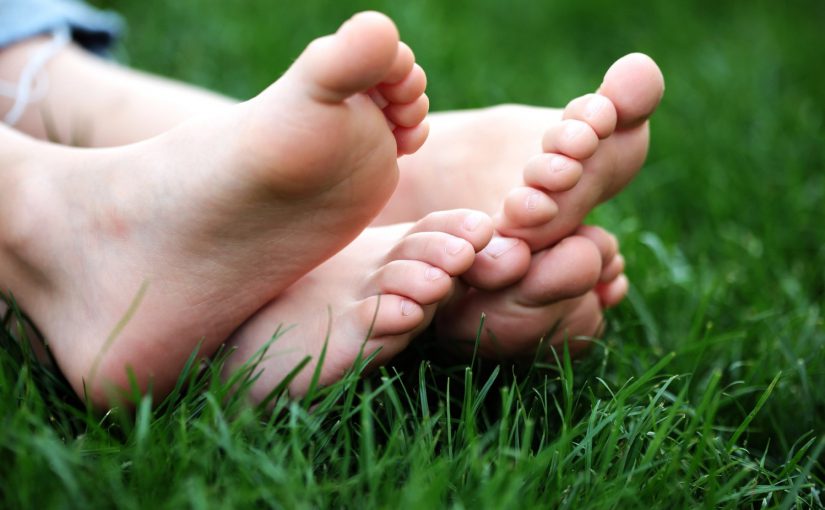Corns, also known as helomas or clavi, and calluses, also known as tyloma, are areas of thickened skin that develop to protect that area from irritation. They occur when there is repeated friction or pressure against the foot. If the thickened skin is located on the bottom of the foot, it’s called a callus. If it occurs on the top of the foot or toe, it’s called a corn. Corns and calluses on feet are not contagious but can lead to more serious foot problems for people with diabetes or decreased circulation.
Corns and calluses occur on parts of the feet and sometimes the fingers.
Common locations for corns are:
• Top of the toes at the knuckles or between toes
• Bottom or the sides of the foot
Common locations of calluses are:
• On the bottom of the foot (soles or bottom of heels)
• Tops and sides of the feet
What Causes Corns and Calluses?
Corns often occur where a toe rubs against the interior of a shoe or sock, particularly if you have irregularly shaped toes or hammer toes. Excessive pressure at the balls of the feet – common in women who regularly wear high heels – may cause calluses to develop on the balls of the feet.
Other common causes of corns and calluses on feet are:
• Abnormal anatomy of the feet, such as hammertoe or other toe deformities.
• Footwear that is too short or too tight or that exert friction at specific points.
• Wearing shoes and sandals without socks, especially if socks do not fit properly.
• Abnormalities in gait or movement that result in increased pressure to specific areas.
Finger calluses may develop in response to using tools, playing musical instruments or using work equipment that exerts pressure at specific areas.
What are the Symptoms of Corns and Calluses?
Corns are round bumps that often appear dry, waxy or discolored. Calluses are flat areas of hard, thickened skin with a waxy appearance. Corns and calluses are:
• Hardened, thick areas of skin
• Rounded or conical and may appear as a bump on the skin
• Dry, scaly or flaky
• Painful if they interfere with walking or other activities
What Treatments are Available for Corns and Calluses on Feet?
Corns and calluses can be treated with medicated products to chemically peel the thickened, dead skin. Many products are available for use as home remedies. Salicylic acid is an active ingredient in all these products.
Salicylic acid dissolves the protein that makes up most of the corn and the thick layer of dead skin which often tops it. These products are gentle and safe for most people.
If the corn is bothersome and doesn’t respond to salicylic acid and trimming, consider consulting a physician or podiatrist for treatment options. Podiatrists can measure and fit people with orthotic devices to redistribute their weight on their feet while they walk so that pressure from the foot doesn’t weight heavily on their corns.
People with fragile skin or poor circulation in the feet should consult their doctor as soon as corns or calluses develop. If there is an infection (such as increasing pain, the presence of pus or other drainage, swelling, and redness), seek medical care immediately.
If a corn or callus persists or becomes painful, medical treatments can provide relief:
• Trimming away excess skin. Your doctor may pare down thickened skin or trim a large corn with a scalpel during an office visit.
• Callus-removing medication. Your doctor may apply a patch containing 40% salicylic acid. Your doctor may also recommend pumice stone, nail file or emery board to smooth acid in gel form.
• Medication to reduce infection risk. Your doctor may recommend applying an antibiotic ointment to reduce the risk of infection.
• Shoe inserts. Your doctor may prescribe custom-made padded shoe inserts to prevent recurring corns or calluses.
• Surgery. Your doctor may recommend surgery to correct the alignment of a bone causing friction.
How Do I Prevent Corns and Calluses on Feet?
For proactive measures, you can prevent corns and calluses by:
• Wearing properly fitted shoes. If you have any deformities of the toe or foot, talk to your podiatrist to find out what shoes are best for you.
• Use gel pad inserts to decrease friction points and pressure. Your podiatrist can help you determine where pads might be useful.
As with any pressing medical condition, consult your doctor for the best results. Contact Jamfeet today for healthy feet that deserve to look as good as they feel.


